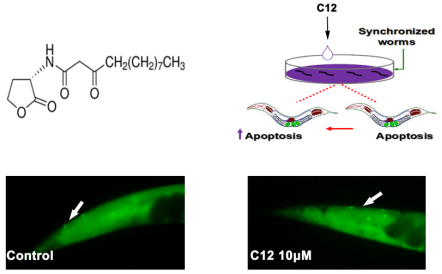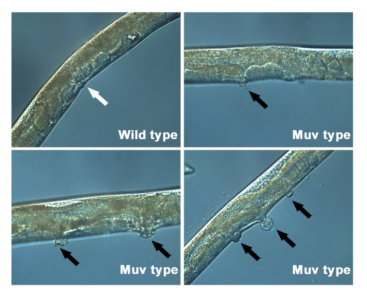
Chinese scientists investigated how homoserine lactone, or C12 exerts its pro-apoptotic and anti-tumor effects in vivo and further demonstrated that it could be a potential candidate to assist cancer therapy.
The work was carried by Prof. ZHAO Guoping and Prof. XU An from Institute of Technical Biology and Agriculture Engineering, Hefei Institutes of Physical Science and APOPTOSIS reported their work.
As a quorum-sensing molecule for bacteria-bacteria communication, C12 has been found to possess pro-apoptotic activities in various cell culture models. However, the detailed mechanism of how it functions in the cells of live animals still remains largely unclear.
In the study, the scientists systematically investigated the mechanism for C12-mediated apoptosis and studied its anti-tumor effect in C. elegans.
Their laboratory data demonstrated that C12 increased C. elegans germ cell apoptosis and elevating the reactive oxygen species (ROS) level.
Importantly, C12-induced ROS increased the expression of genes critical for DNA damage response and genes involved in p38 and JNK/MAPK signaling pathway.
Furthermore, C12 failed to induce germ cell apoptosis in animals lacking the expression of each of those genes. In a C. elegans tumor-like symptom model, C12 significantly suppressed tumor growth through inhibiting the expression of RAS/MAPK pathway genes.
Their study indicated that DNA damage response and MAPK activation triggered by mitochondrial ROS play important roles in C12-induced apoptotic signaling in C. elegans, and RAS/MAPK suppression is involved in the tumor inhibition effect of C12.
This discovery provides in vivo evidence that C12 could be a potential candidate for cancer therapeutics by exerting its pro-apoptotic and anti-tumor effects via elevating mitochondria-dependent ROS production.
This work was supported by CAS Pioneer Hundred Talents Program (GZ), National Natural Science Foundation of China and the Anhui Provincial Natural Science Foundation.

Figure 1. C12 induced germ cell apoptosis in C. elegans (Image by CHEN Bin)

Figure 2. C12 suppressed the over-activated RAS/MAPK pathway in C. elegans (Image by CHEN Bin)

86-10-68597521 (day)
86-10-68597289 (night)

52 Sanlihe Rd., Xicheng District,
Beijing, China (100864)

